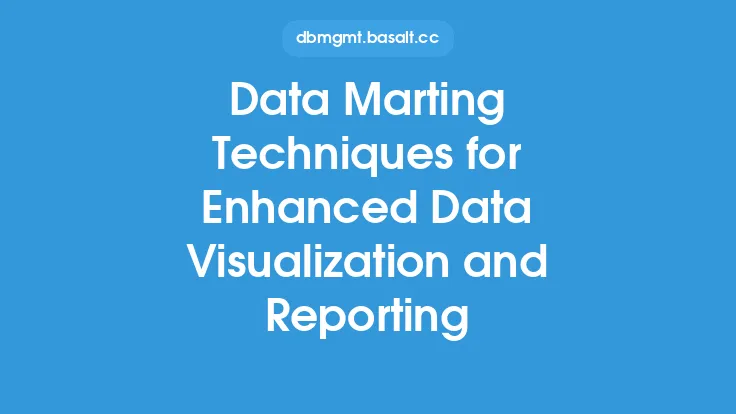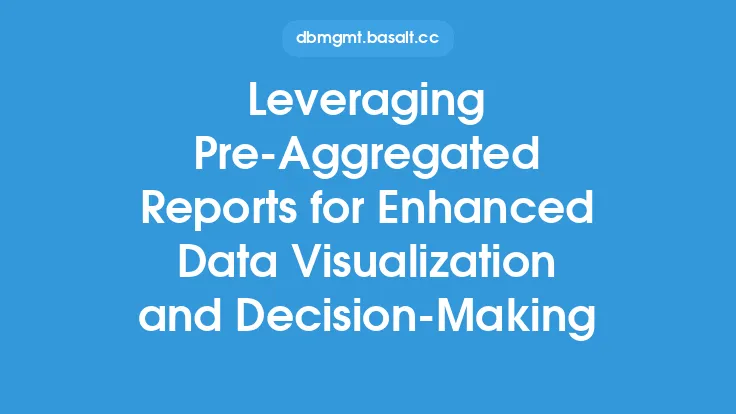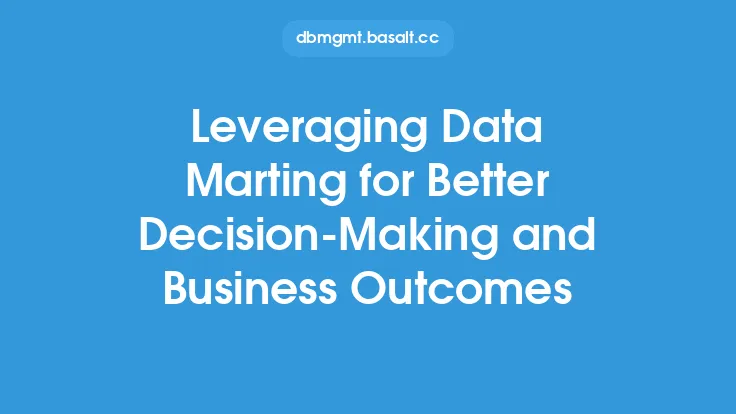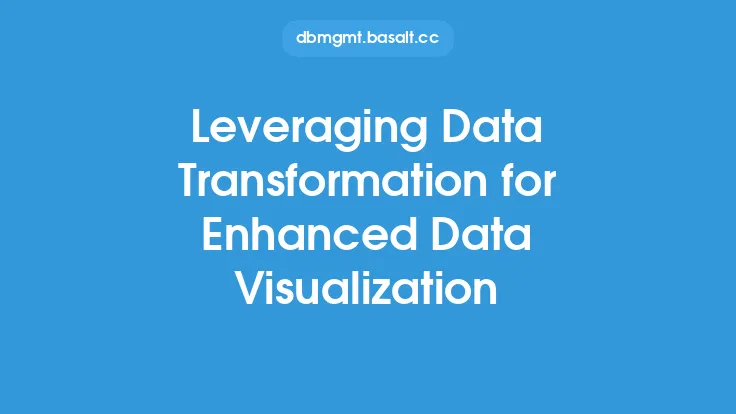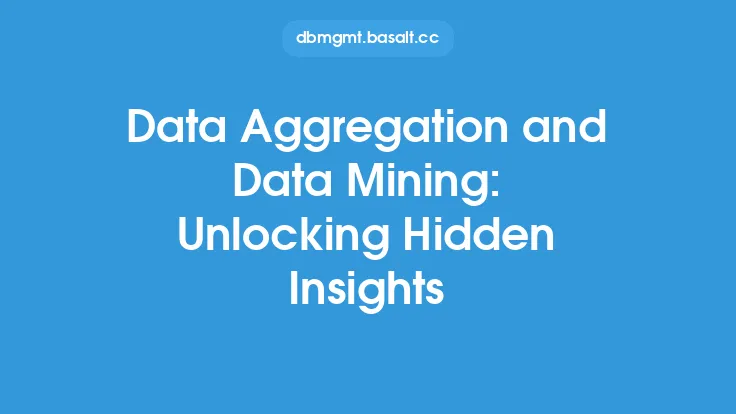Data aggregation is a crucial process in data analysis that involves collecting and combining data from multiple sources into a single, unified view. This process enables organizations to gain a deeper understanding of their data, identify trends and patterns, and make informed decisions. One of the key benefits of data aggregation is its ability to enhance data visualization and reporting. By aggregating data, organizations can create interactive and dynamic visualizations that provide insights into complex data sets, making it easier to communicate findings to stakeholders.
Introduction to Data Aggregation
Data aggregation is a process that involves collecting data from various sources, such as databases, spreadsheets, or external data providers. The data is then combined and processed to create a unified view, which can be used for analysis, reporting, and visualization. Data aggregation can be performed using various techniques, including rollup, cube, and grouping sets. The choice of technique depends on the type of data, the level of granularity required, and the desired outcome.
Benefits of Data Aggregation for Data Visualization
Data aggregation provides several benefits for data visualization. Firstly, it enables the creation of interactive and dynamic visualizations that can be used to explore complex data sets. By aggregating data, organizations can identify trends and patterns that may not be apparent when looking at individual data points. Secondly, data aggregation enables the creation of drill-down reports, which allow users to navigate from high-level summaries to detailed data. This enables users to gain a deeper understanding of the data and identify areas that require further analysis.
Types of Data Aggregation
There are several types of data aggregation, including:
- Rollup: This involves aggregating data from multiple sources into a single, unified view.
- Cube: This involves aggregating data into a multidimensional array, which can be used to analyze data from different perspectives.
- Grouping sets: This involves aggregating data into groups, which can be used to analyze data by different categories.
Each type of data aggregation has its own strengths and weaknesses, and the choice of technique depends on the specific use case and requirements.
Data Aggregation Techniques for Enhanced Visualization
Several data aggregation techniques can be used to enhance data visualization, including:
- Data warehousing: This involves creating a centralized repository of data, which can be used to aggregate and analyze data from multiple sources.
- ETL (Extract, Transform, Load): This involves extracting data from multiple sources, transforming it into a standardized format, and loading it into a centralized repository.
- Data mining: This involves using advanced algorithms to identify patterns and trends in large data sets.
- OLAP (Online Analytical Processing): This involves using specialized software to analyze and aggregate data in real-time.
Best Practices for Data Aggregation
To get the most out of data aggregation, organizations should follow best practices, including:
- Define clear goals and objectives: Before aggregating data, organizations should define what they want to achieve and what insights they want to gain.
- Choose the right technique: The choice of data aggregation technique depends on the type of data, the level of granularity required, and the desired outcome.
- Ensure data quality: Data aggregation is only as good as the data itself. Organizations should ensure that their data is accurate, complete, and consistent.
- Use visualization tools: Data visualization tools can be used to create interactive and dynamic visualizations that provide insights into complex data sets.
Common Challenges in Data Aggregation
Data aggregation can be challenging, especially when dealing with large and complex data sets. Common challenges include:
- Data quality issues: Poor data quality can lead to inaccurate or incomplete aggregations.
- Data integration issues: Integrating data from multiple sources can be challenging, especially when dealing with different data formats and structures.
- Scalability issues: Data aggregation can be computationally intensive, especially when dealing with large data sets.
- Security issues: Data aggregation can involve sensitive data, which must be protected from unauthorized access.
Future of Data Aggregation
The future of data aggregation is exciting, with new technologies and techniques emerging all the time. Some of the trends that are expected to shape the future of data aggregation include:
- Big data: The increasing volume and variety of data will require new and innovative data aggregation techniques.
- Cloud computing: Cloud computing will enable organizations to aggregate and analyze data on a large scale, without the need for expensive hardware and software.
- Artificial intelligence: Artificial intelligence will enable organizations to automate data aggregation and analysis, freeing up resources for more strategic activities.
- Internet of Things (IoT): The IoT will generate vast amounts of data, which will require new and innovative data aggregation techniques to analyze and visualize.
